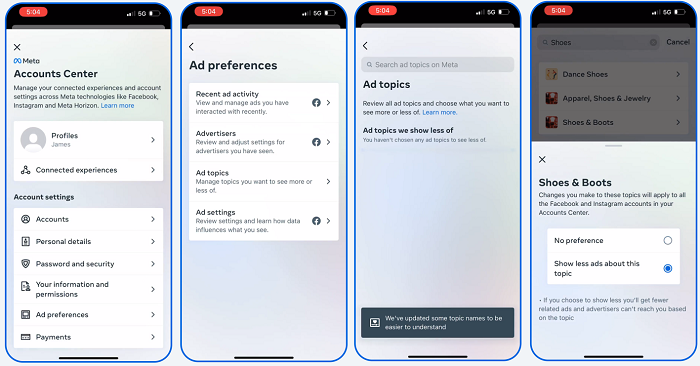Meta’s upping its data privacy processes for young users, with new restrictions on how teens can be targeted by ads in its apps, and new control options that will enable teens to opt out of ad topics.
First off, on ad targeting limits – following on from its already established restrictions on targeting younger users, which remove interest and activity as parameters for these audiences, Meta will now also remove gender as an option for advertisers to reach teens.
That’ll further limit advertiser capacity to focus their ads based on specific targeting, while Meta’s also removing in-app engagement – like following certain Instagram profiles or Facebook Pages – as a measure to inform the ads that teens see.
As per Meta:
“Age and location will be the only information about a teen that we’ll use to show them ads. Age and location help us continue to ensure teens see ads that are meant for their age and products and services available where they live.”
There are various reasons for this. For one, Meta notes that teens ‘aren’t necessarily as equipped as adults to make decisions about how their online data is used for advertising, particularly when it comes to showing them products available to purchase’.
Gender targeting can also reinforce cultural bias to some degree, while targeted ads based on in-app actions could see inappropriate promotions being shown to younger users.
To be clear, Meta already has restrictions in place that limit the types of ads that can be shown to teens. But these new measures go an extra step, in limiting exposure to promotional content across Facebook and Instagram, primarily.
Which could also limit your capacity to hone in on specific audiences – but then again, by using Meta’s own AI-dictated ad targeting options, you’ll still be able to reach receptive audiences across its apps, based on relevant factors.
You just won’t be able to use interests, activity or gender specifically, but there are still commonalities among younger audiences that would see Meta’s AI highlight your promotions to these audiences.
In addition to this, Meta’s also rolling out new options that will enable teen users to control the ads they see in its apps.
“Starting in March, teens will have more ways to manage the types of ads they see on Facebook and Instagram with Ad Topic Controls, expanding on what’s already available. Teens will be able to go to their Ad Preferences within Settings on both apps, and choose ‘See Less’ or ‘No Preference’ to further control the types of ads they see.”

All users have access to Meta’s Ad Preferences tool, which enables you to manage the promotions that you’re shown. But now, teens will have additional control measures, which will let them opt out of any topic or topic group.
“Our Advertising Standards already prohibit ads about restricted topics – like alcohol, financial products and weight loss products and services – to be shown to people under 18 (and older in certain countries). But even when an ad complies with our policies, teens may want to see fewer ads like it. For example, if a teen wants to see fewer ads about a genre of TV show or an upcoming sports season, they should be able to tell us that.”
Adult users can only opt out of certain ad categories, like alcohol and gambling, but younger users will now be able to switch off ads in virtually any topic group – or at least, register their disinterest, which will see them shown fewer ads in that area.
The changes come in the wake of Meta’s first-ever Youth Safety and Well-Being Summit, which was held last month in Washington DC, and brought together a range of child safety experts to discuss the best ways forward for social apps.
Meta has since called on governments to implement stronger protections for younger users, on all digital platforms, in order to provide clearer guidance around expectations. But even without those guard rails, Meta’s moving to evolve its processes to ensure that youngsters are not being manipulated by ads in its apps.
Which could have implications for many brands, particularly those looking to reach younger audiences on IG. But again, there are still ways to do this, even without specific audience targeting.
Results will vary, but when you consider the logic behind Meta’s decisions, most would agree that providing more controls and restrictions makes sense.



